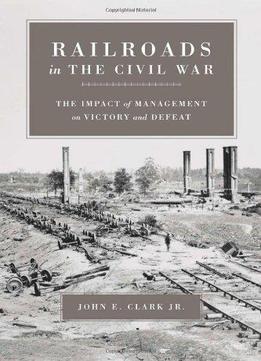
Railroads In The Civil War: The Impact Of Management On Victory And Defeat
by John E. Clark /
2004 / English / PDF
3.3 MB Download
By the time of the Civil War, the railroads had advanced to allow the movement of large numbers of troops even though railways had not yet matured into a truly integrated transportation system. Gaps between lines, incompatible track gauges, and other vexing impediments remained in both the North and South. As John E. Clark Jr. Explains in this keen study, the skill with which Union and Confederate war leaders met those problems and utilized the rail system to its fullest potential was an essential ingredient for ultimate victory. Clark focuses on two case studies of troop movement: Longstreet’s transfer of thirteen thousand men from the Army of Northern Virginia to the Army of Tennessee in the fall of 1863, and the Union’s corresponding shift of the Army of Potomac’s Eleventh and Twelfth Corps to the Army of the Cumberland to save Chattanooga. By the time of the Civil War, the railroads had advanced to allow the movement of large numbers of troops even though! railways had not yet matured into a truly integrated transportation system. Gaps between lines, incompatible track gauges, and other vexing impediments remained in both the North and South. As John E. Clark Jr. Explains in this keen study, the skill with which Union and Confederate war leaders met those problems and utilized the rail system to its fullest potential was an essential ingredient for ultimate victory. Clark focuses on two case studies of troop movement: Longstreet’s transfer of thirteen thousand men from the Army of Northern Virginia to the Army of Tennessee in the fall of 1863, and the Union’s corresponding shift of the Army of Potomac’s Eleventh and Twelfth Corps to the Army of the Cumberland to save Chattanooga.











